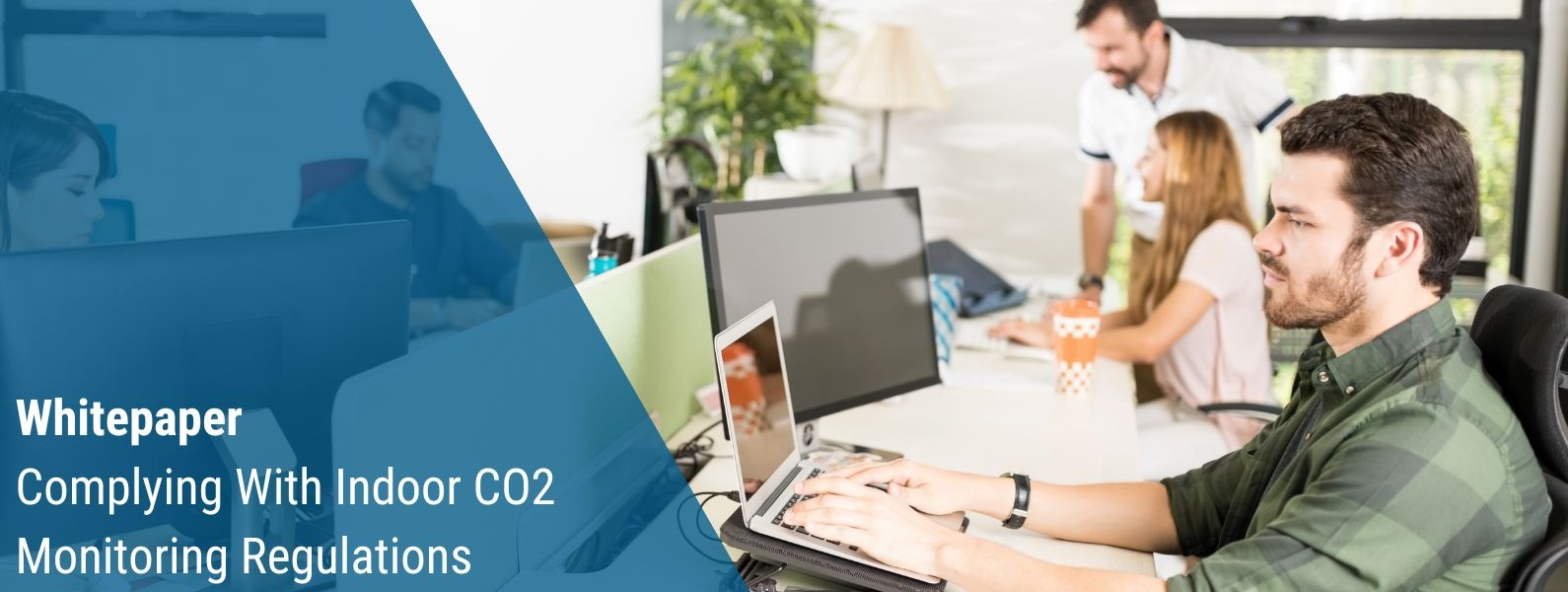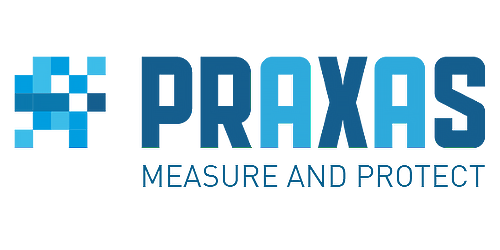Complying With Indoor CO2 Monitoring Regulations
- Posted on
- By Praxas and Lascar
- Posted in CO2 Monitoring, EL-WEM+, Health and Safety, Indoor Air Quality
- 0

Indoor air quality legislation emphasizes monitoring CO2 levels for health and safety. Compliance is crucial in creating healthy environments, ensuring proper ventilation, and avoiding potential health issues.
Indoor Air Quality Legislation
It is a well-established fact that indoor carbon dioxide (CO2 ) levels can cause a variety of health problems, including respiratory ailments, headaches, dizziness and fatigue(1). These changes can occur in concentrations as low as 500 ppm, not far above the typical outdoor ‘fresh air’ level around 400 ppm. Indoor CO2 levels can also be used as a proxy to indicate the standard of ventilation, a key factor in preventing the spread of airborne diseases (2).
In order to avoid long-term health effects on building occupants and visitors, many governments around the world have enacted, or are considering, legal requirements for monitoring indoor CO2 levels in offices, factories, schools and other workplaces, including the USA(3), UK4 , Japan(5) and Germany(6) .
For example, in the UK the Building Regulations (2010), which support the Health and Safety at Work Act (1974), require that action should be taken if indoor CO2 concentrations exceed 1500 ppm, with 800 ppm recommended for areas where there are high levels of physical activity. This legislation also specifies desirable characteristics for CO2 monitors, methods for taking accurate CO2 measurements, and recommended actions to reduce indoor CO2 levels.
CO2 Monitor Requirements
There are many different makes and models of CO2 monitor available, but many are unsuitable for accurate monitoring of indoor concentrations.
- Indoor CO2 levels can vary from as low as 400 ppm to over 5,000 ppm, and so as a minimum the monitor should measure between these limits.
- The monitor should directly measure CO2 itself, not provide an estimated CO2 reading based on a different factor such as oxygen levels.
- The monitor must be calibrated, to ensure accurate readings, and it should only be used within the recommended calibration period. Monitors that can self-calibrate will save users time and money.
Best Practice for Using CO2 Monitors
It is vital that readings taken accurately represent the concentration of CO2 that users of a building will experience.
- A separate monitor should be located in each room or working area.
- Monitors should be positioned around head height, at least 0.5m away from occupants, to avoid directly measuring exhaled breath which will give misleadingly high readings.
- Monitors should also be placed away from windows, doors, ventilators or air conditioners, to avoid misleadingly low readings in those localised areas.
- Measurements should be taken at key times through the working day, frequently enough to capture changes in use or occupancy levels over time.
- Records should be kept, to allow analysis and understanding of long-term trends. The most effective way to do this is to use a data logging CO2 monitor that not only takes measurements but automatically stores them, for example via a Cloud data service.
Action to Reduce CO2 Levels
It is incumbent upon those responsible for occupied indoor spaces to not only measure CO2 concentrations, but also to reduce them to recommended levels. To do this effectively requires both top-down and bottom-up action, and so the results of monitoring should be discussed with everyone who has responsibility for the way indoor spaces are used and managed, as well as regular users.
- Improve natural ventilation by fully or partly opening windows, air vents and doors, but never prop fire doors open. It can be good practice to fully air a room whenever it is unoccupied.
- Use mechanical ventilation, including fans and air conditioning, to bring fresh air into a building from outside. Don’t lower mechanical ventilation rates if the number of people in an area reduces temporarily, ventilation rates should be based on the maximum ‘normal’ occupancy of an area.
- Where possible, reduce occupancy levels in rooms or areas with poor ventilation, for example by staggering working times to decrease the peak number of users.
- Consider the way in which an area is utilised: one used for exercise, sport or singing will need higher levels of ventilation to keep CO2 concentrations within recommended limits.
Ensuring the health and well-being of buildings users is an ongoing duty, and so even when CO2 levels have been reduced to recommended levels, monitoring must continue as conditions will often change throughout the year.
Finally, aside from fulfilling legal requirements, CO2 monitoring can play a key role in building maintenance, as any failure or fault with ventilation and air conditioning systems will quickly be revealed in measured CO2 data.
References
1.‘Effects of low-level inhalation exposure to carbon dioxide in indoor environments: A short review on human health and psychomotor performance’, by Kenichi Azuma, Naoki Kagi, U. Yanagi and Haruki Osawa, 30th August 2018 ‘
2.‘Predictive and retrospective modelling of airborne infection risk using monitored carbon dioxide’, by Henry C. Burridge, Shiwei Fan, Roderic L. Jones, Catherine J. Noakes and P. F. Linden, 28th September 2021 ‘
3.‘Indoor Air Quality in Commercial and Institutional Buildings’, Occupational Safety and Health Administration, 2011 ‘
4.‘The Building Regulations’, UK Government, 2010 ‘
5.‘Ventilation Required for Indoor Air Quality’, Air Conditioning and Sanitary Engineering Society, October 31st 2016 ‘
6.‘Indoor Air Guide Values’, German Committee on Indoor Air Guide Values, January 7th 2022
For PDF click here


Comments
Be the first to comment...